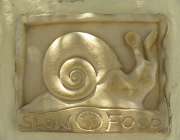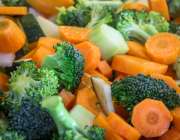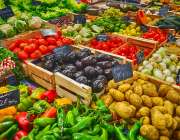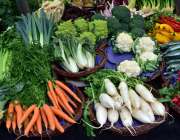- Email: info@yournutrition.site
- Home
- Living well
- Services
-
Recipes
- Recipes overview
- Large nutrition filter
- Breakfast
-
Lunch
- Spiced lentil soup
- Curried butternut squash and peanut butt
- Hearty leek and potato soup
- One pot spanish rice and bean soup
- Roasted veg filled herb egg rolls
- Spanish tortilla
- Vine tomato soup
- Chickpea and chorizo soup
- Pumpkin, sweet potato and ginger soup
- Minestrone soup
- Hot plum and fennel salad
- Chickpea and spinach curry
- Pink scottish salad
- Potato, pea and mint tortilla
- How to make your own kimchi
- Skirlie ball recipe
- Spiced carrot & lentil soup
- Poached eggs with grilled vegetables on
-
Dinner
- Hearty root veg curry
- Tarka dal
- Batch cooked beef stew
- Batch cooked chicken biryani
- Spiced pilau rice
- Pesto risotto with caramelised onions
- Mexican style sweet potato gratin
- Idiyappam
- Pumpkin risotto
- Jamaican black bean stew
- Balsamic roasted beetroot
- Easy peasy pizza
- Carrot and celeriac gratin
- Leek and potato cake
- Kale pesto
- Macaroni cheese
- Joe's healthier chilli
- Chicken jalfrezi
- Snacks
- Desserts
- Special diets
- Learn to cook
- Testimonials
- About
-
News
- News overview
- Nbite
- Nutrition News
- Site News
-
General News
- Coming soon
- Local News
-
Promotions
- Coming soon
-
Competitions
- Coming soon
- Links
- Contact
-
Living well
- Home
- Living well
- Healthy eating
- Legumes and Pulses
Legumes and Pulses
- Aug 17, 2018
- Joe Jones
- 654 words, Reading time around 4 minutes
- Living well
-
Healthy eating
Home & Business
Legumes Pulses lentils beans peas nutrition vitamins minerals health fibre learn-to-cook https-yournutrition-site protein recipe
Legumes and Pulses Nutrition
Legumes are from a family of plants that produce fruits that are more commonly referred to and used as vegetables, such as peas and beans. Pulses are the dried edible seeds of this plant family.
Legumes and pulses are some of the oldest cultivated crops across the world, with each culture having its favourite. Aduki and mung beans most associated with south east Asia, lentils with south Asia, chick peas with Mediterranean and Middle Eastern cooking, black beans with the Caribbean, kidney beans with Mexico and black eyed beans with southern USA.
This food group is extremely beneficial to our diets, and especially to those on a vegetarian diet, as its high in protein, carbohydrate, fibre and B-vitamins. Although not as easily absorbed as animal based protein and classed as incomplete proteins (they don’t contain all 9 of the essential amino acids needed by the body) when combined with grains (think rice and peas or beans on toast) pulses provide a meal as complete as animal based protein.
Preparation and Cooking
Pulses are available tinned or dried, buying them tinned saves time in cooking as when tinned they have already been soaked and cooked, so once rinsed can be used straight away in a salad or just heated through. But tinned can be more expensive and don’t have as good a flavour or texture as when dried, soaked and boiled.
When using from dried, pulses need to be soaked for 10-12 hours, this helps to start to soften them and ensure they cook evenly. This can be done overnight or during the day while at work, just place them into a large bowl as they will swell to about three times in size and cover with at least 4 inches of water. Once well soaked, drain, rinse and cook in fresh water.
To speed up the soaking process, place pulses into a pan well covered with water, bring to the boil for 10 minutes before removing from the heat and leaving to stand in the water for 30-60 minutes. Drain before cooking on their own, or in as part of a recipe you are making. Most soaked pulses will take around 1-1 1/2 hours to cook, but lentils and split-peas can be cooked without soaking and will take around 20-30 minutes to become tender.
Storage and Sprouted Pulses
Storage
When buying dried pulses they should look plump and shiny and stored in a cool dark place in an airtight container. Although they can be kept for up to 12 months, they toughen over time, so unless you are regularly using larger amounts in cooking, its best to buy pulses in smaller amounts (500g-1kg packs)
Sprouted Pulses
Sprouted pulses are those that have germinated, meaning they have started to grow. They can be bought, but they can be expensive and have a short shelf life.
Lots of pulses can be sprouted, the benefits of this are that once the seed has germinated, its nutritional value increases substantially. They can then be used in salads and sandwiches to add a lovely crunch and different flavours.
Pulses can easily be freshly sprouted at home in the amounts needed using a jam jar with a piece of muslin secured over the top by an elastic band. Douse the pulses in water in the jar before immediately draining through the muslin lid each day, making sure they stay well drained or they could start to ferment, it will take around 2-4 days for the sprouts to grow depending on the size of the pulse.
This article is part of our new recipe type 'Learn to cook'. These recipes will provide you with fundamental cooking skills and break down the nutrition information on various cooking methods.
Below is a link to all our recipes and the first Legume and Pulse recipe from our new series 'Boiled red split lentils'.











